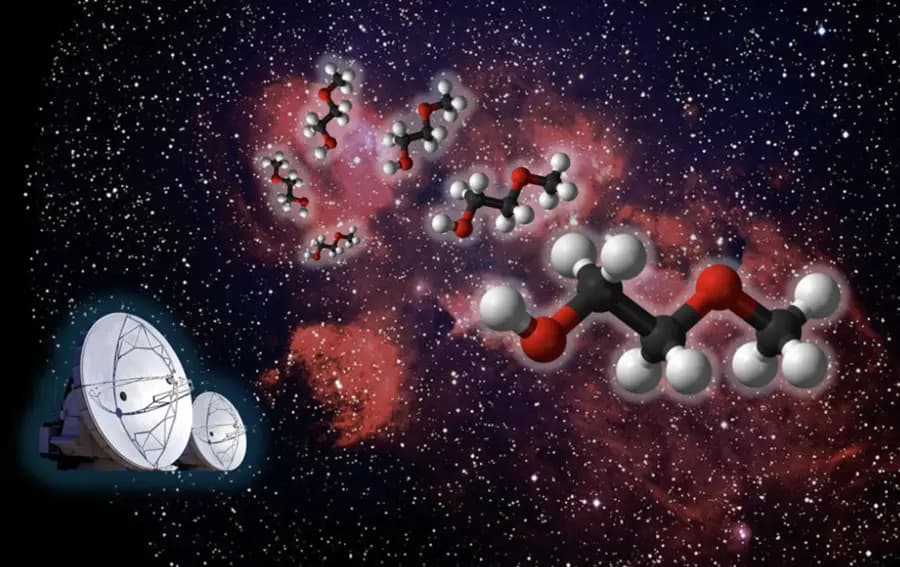A team of researchers, led by MIT Professor Brett McGuire, has made a groundbreaking discovery – the detection of a previously unknown molecule within the vast expanse of space. This finding, detailed in the April 12 issue of The Astrophysical Journal Letters, offers valuable insights into the intricate chemical processes that occur during the birth of stars and the formation of planetary systems.
Zachary T.P. Fried, a graduate student in the McGuire group and lead author of the study, spearheaded this collaborative effort. The research involved contributions from scientists across the globe, spanning institutions in France, Florida, Virginia, and Copenhagen. Their collective expertise enabled the identification of this elusive molecule, shedding light on the evolving complexity of molecules during star formation.
The research team employed a unique approach to identify molecules in space. They began by utilizing machine learning models to predict promising molecular candidates. These models suggested the molecule 2-methoxyethanol as a potential target, a complex molecule significantly larger than most previously detected in interstellar space.
To confirm its presence, the team meticulously measured the molecule’s rotational spectrum in laboratories on Earth. This spectrum, akin to a molecular fingerprint, served as a reference point for their subsequent observations using the Atacama Large Millimeter/submillimeter Array (ALMA) telescope. Analyzing data from two star-forming regions, NGC 6334I and IRAS 16293-2422B, the researchers successfully identified the distinct signature of 2-methoxyethanol within NGC 6334I.
This discovery holds significant implications for our understanding of chemical evolution during star formation. The detection of 2-methoxyethanol, a molecule with 13 atoms, is noteworthy as molecules of this size are relatively rare in interstellar space. Prior to this finding, only six molecules larger than 13 atoms had been detected outside our solar system, many by McGuire’s group, and all characterized by ringed structures.
Further investigation into the abundance and formation pathways of large molecules like 2-methoxyethanol will provide valuable information about the efficiency and specific reactions involved in their creation. Additionally, the molecule’s presence in NGC 6334I but not in IRAS 16293-2422B offers a unique opportunity to explore how the differing physical conditions of these star-forming regions influence the chemical processes taking place.
The discovery of 2-methoxyethanol serves as a testament to the power of scientific collaboration and advanced technologies in unraveling the mysteries of the universe. As researchers continue to probe the chemical makeup of star-forming regions, they inch closer to comprehending the intricate processes that govern the birth of stars and the formation of planets, potentially even those capable of harboring life.
For further details on this exciting discovery, please refer to the original research article: Rotational Spectrum and First Interstellar Detection of 2-Methoxyethanol Using ALMA Observations of NGC 6334I
The original research cover story can be read at MIT Research News.
The image is a courtesy of the researchers.













Responses (0 )